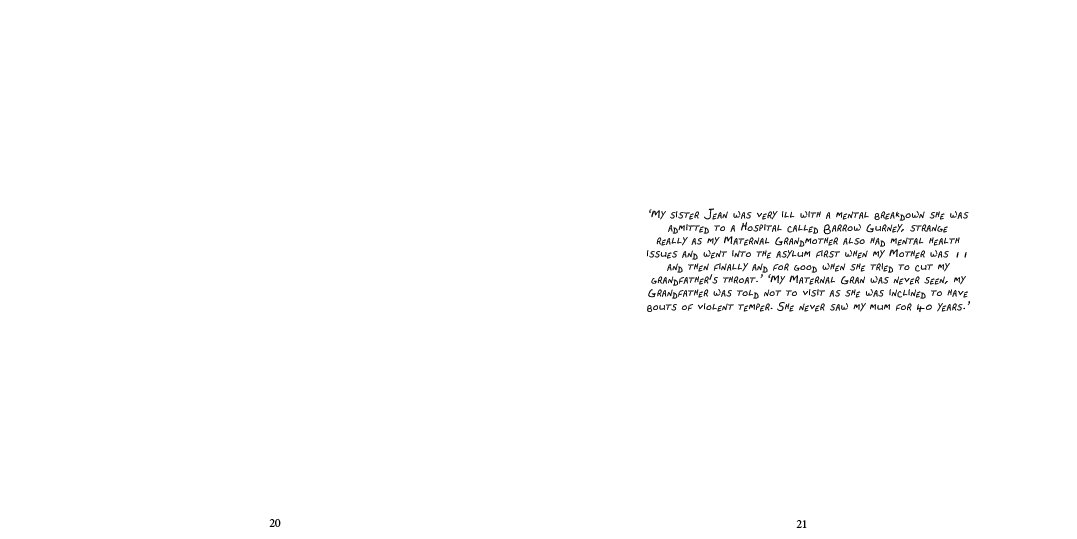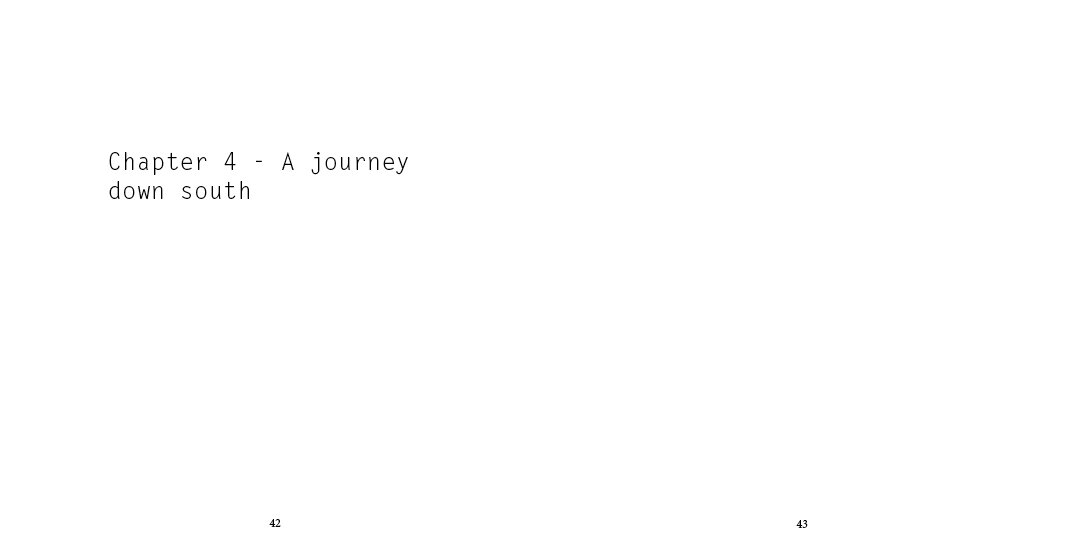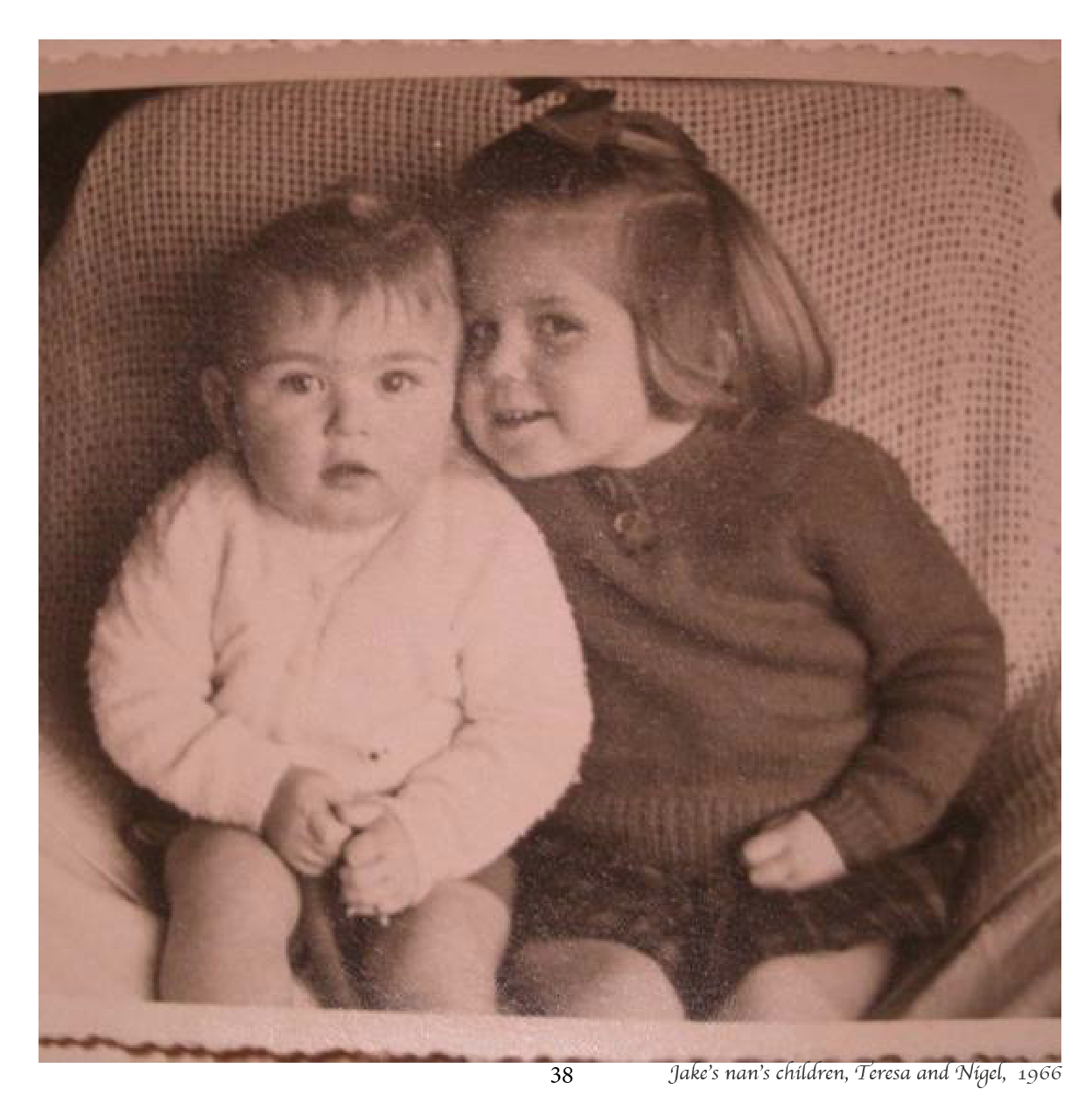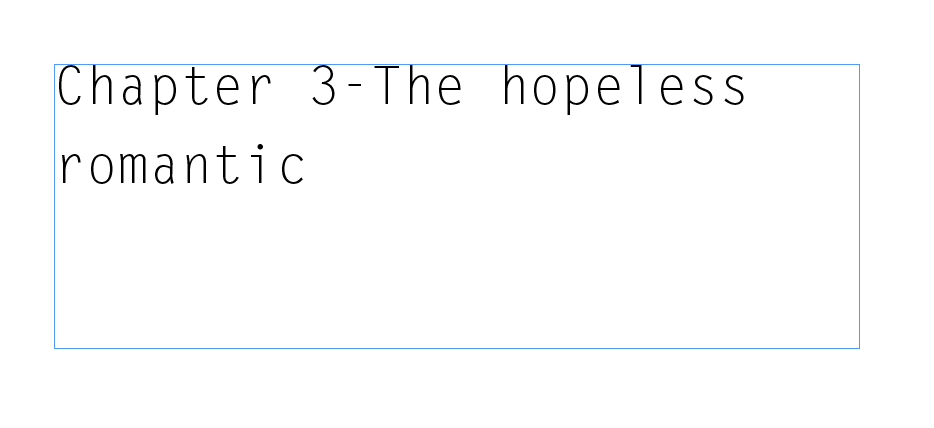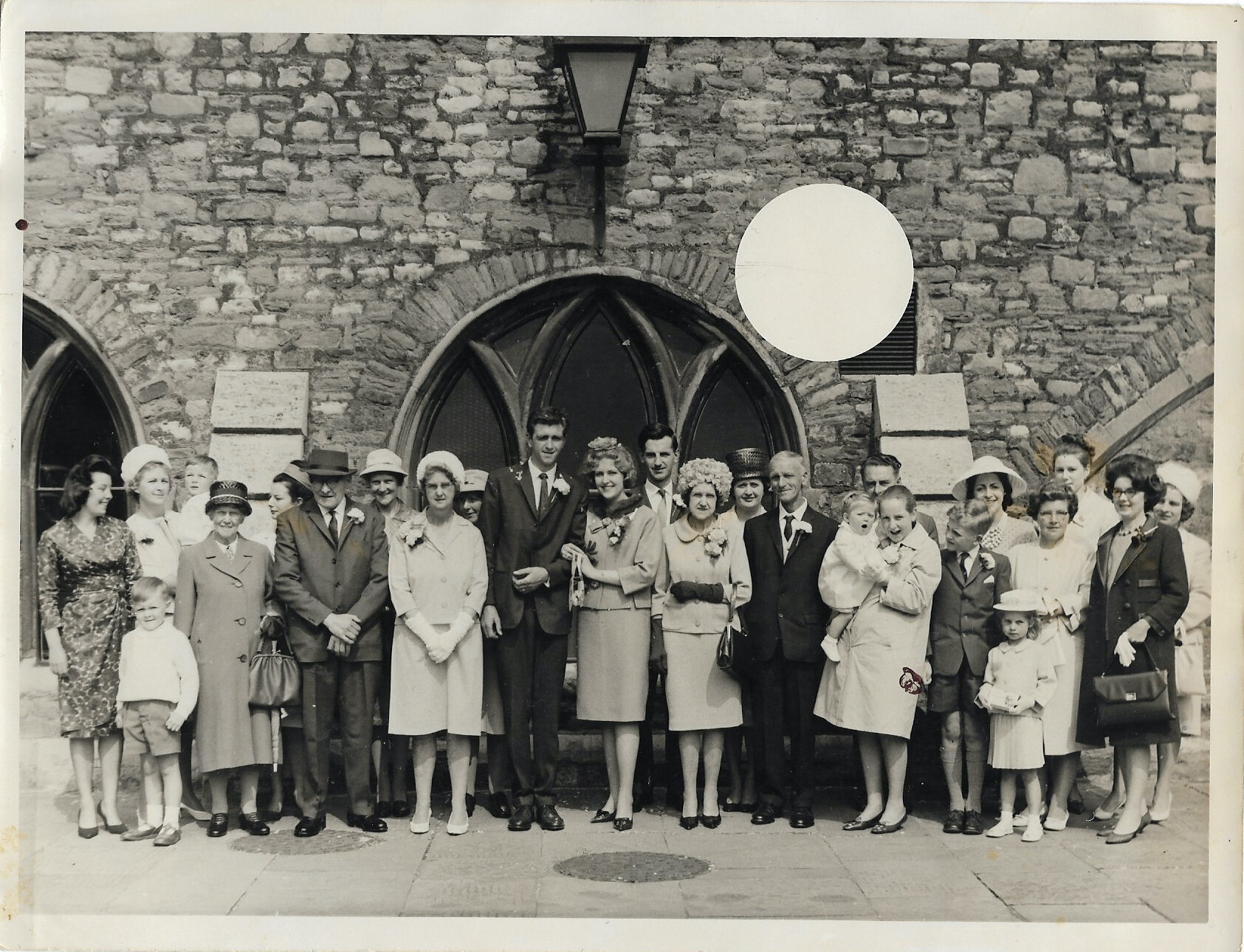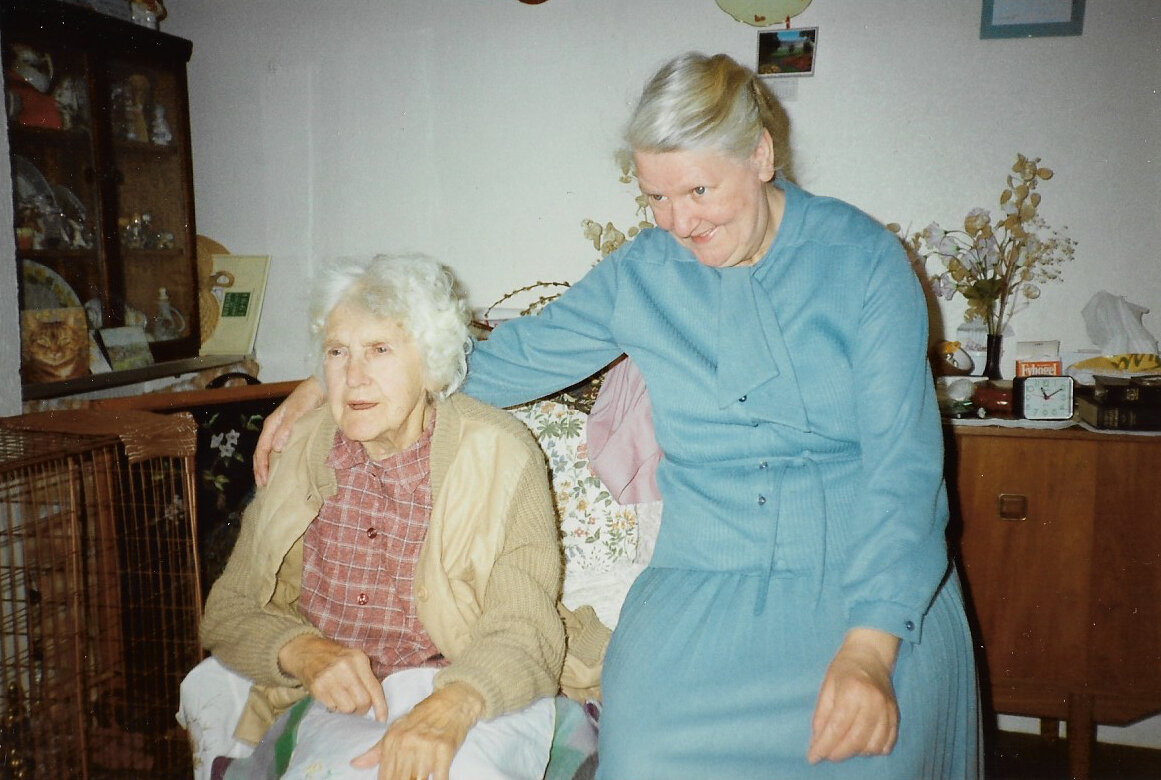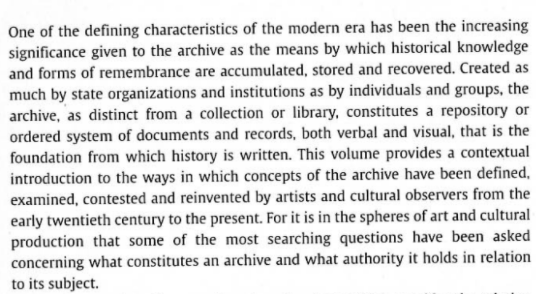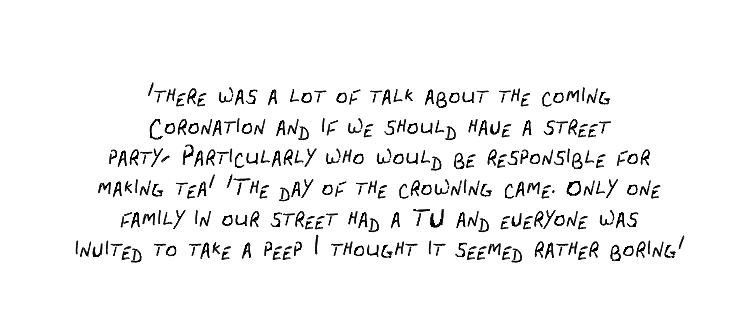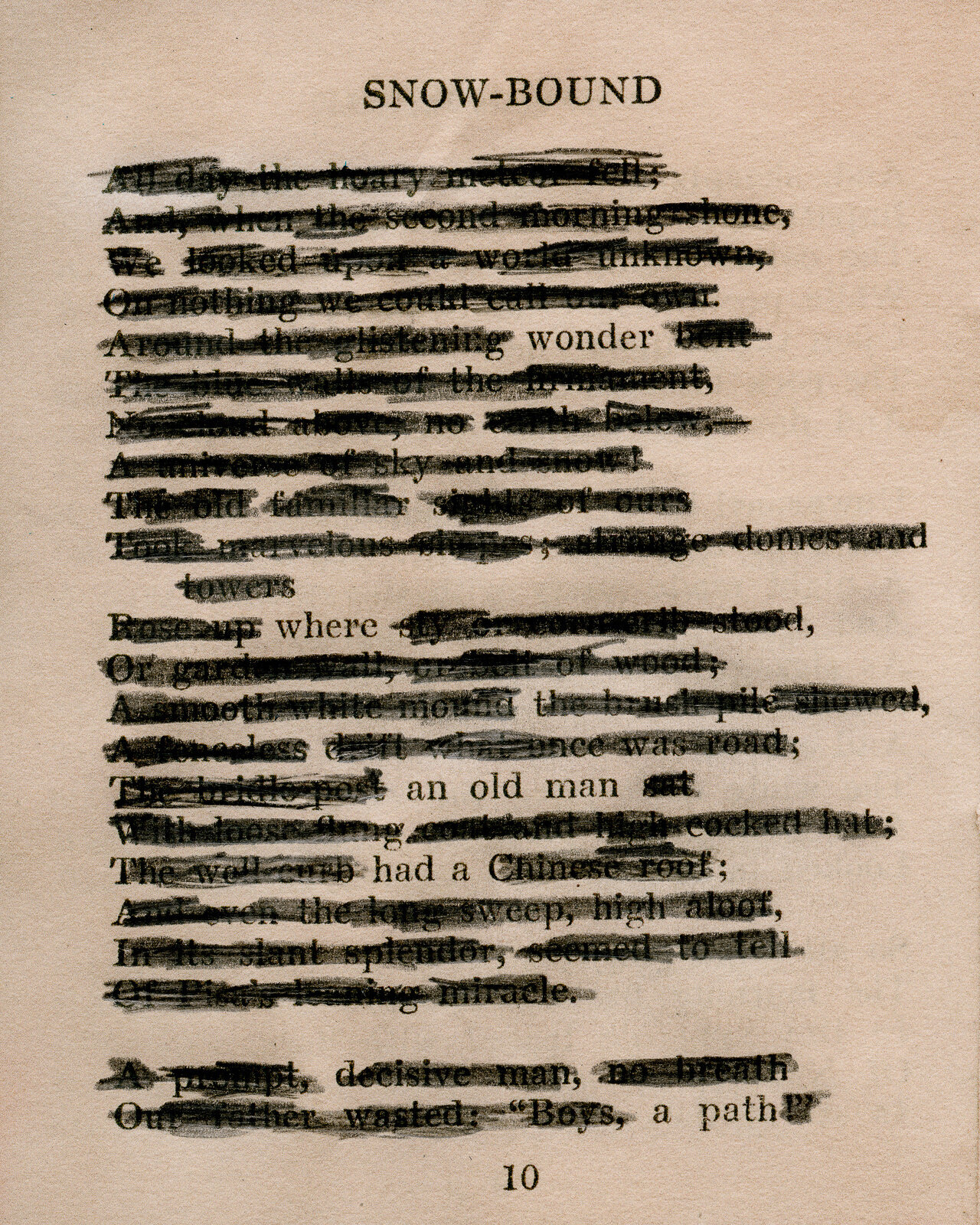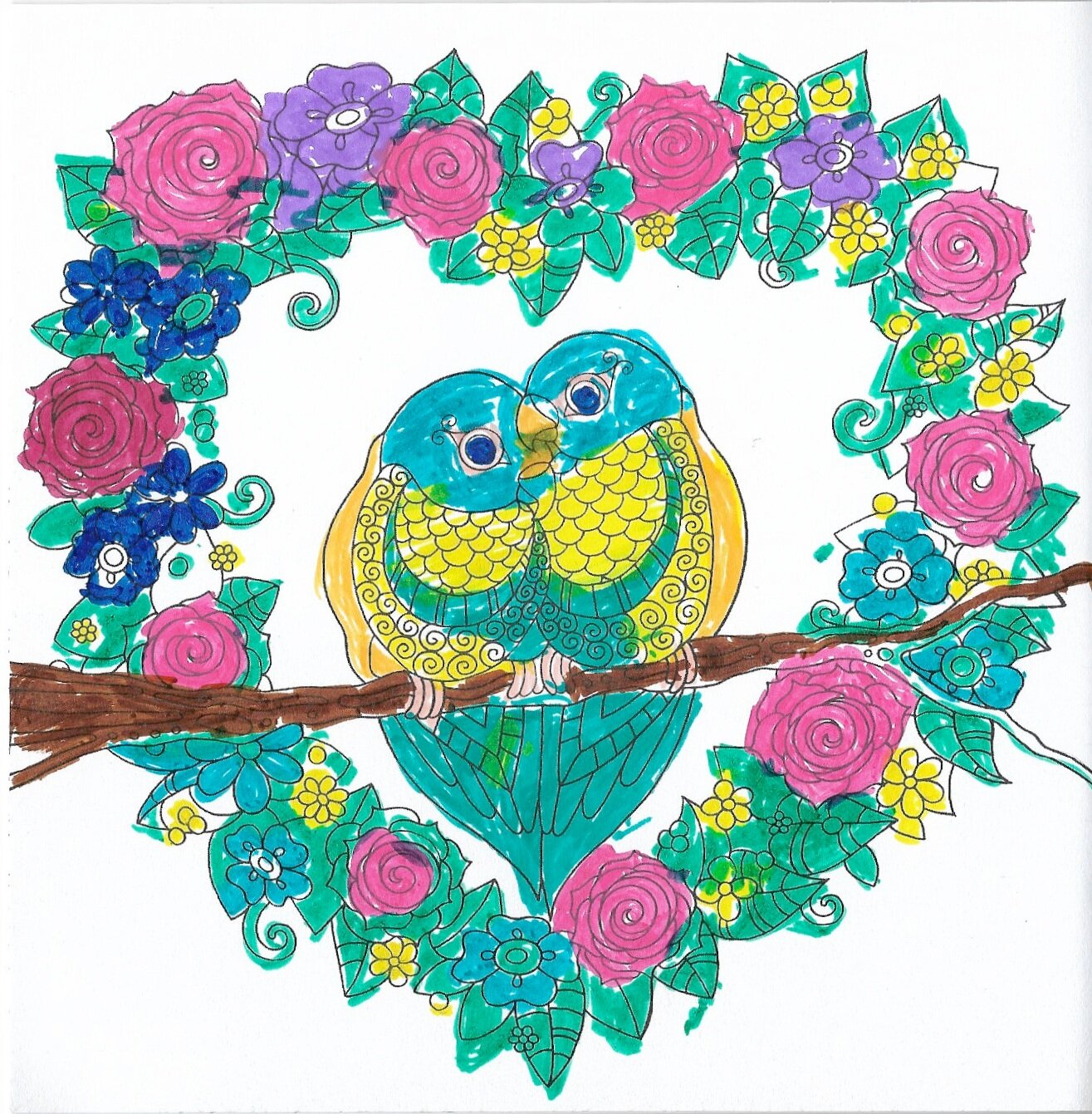Here is the finished book.
Book Cover
I have really struggled to find a cover for this book, I have been looking back at the books I have researched for this project and some, and they all have different covers and I cannot decide which kind I like the most.
I do however feel as I a plain background with a small image on the front could work as it does not give too much away without seeing the inside as well.
I decided to use a slightly darker shade of white to make it look like the creamy colour that is often on wedding albums and I used the very first image used in the book as I feel it is a good way to demonstrate the beginning to a very interesting story.
I used a gutter of 6mm as there are a good 88 pages in the book so I feel it will need that extra space for these pages.
Evaluation & Bibliography
This project has been a whirlwind of emotions, I started it very late due to not having completed my previous project in time, and so I was in between a rock and a hard place. Still, I am so proud of myself for managing to catch up and complete this project!
I have thoroughly enjoyed every single aspect of this project, even though things have been complicated due to the current world circumstances and a couple of personal situations.
I feel this is the beginning of a new era for me as I have discovered my love for working with archive materials and the research behind it all! I have also become a lot more interested in books. I have purchased a number of them, including Susan Sontag’s - ‘Regarding the Pain of other’ and ‘On Photography’. Not only this but I had received a lot of book for Christmas which I hadn’t even touched and only now do I realise the value of them and I am so grateful for them!
I started this project with completely different ideas to what I have finished with. I knew already that I wanted to create a book as my final display as I was aiming to use Jake’s nan’s writing which she is in the process of writing at the moment. I read through the parts that she has, and I took extracts from it and placed them next to photographs which I found in her storage boxes. I never realised how interesting she was until I started this project even though I already had such a secure connection with her. She has had a fascinating life. I feel like I know a whole new side to her, I understand now why she gets so frustrated with her condition as she was once quite an active person who now struggles to even get out of their chair.
My main aim for this project was to show the impact of being diagnosed with such an illness can have on a person. However, once I started doing more research and finding more photographs, it became so much more than just about the disease, it became about her whole life story, which I am pleased about.
I was inspired by several books and photographers throughout the process of this. Still, mostly by Celine Marchbank and Larry Sultan as they both created such exciting and beautiful projects based on their parents, I found my images to hold similar visual aspects to those of Celine Marchbank. I think this is because when she came to give us a talk back in 2018, I was so inspired by her that I wanted to create a project on my nan. Now obviously due to circumstances and as I am not able to currently see my nan, I thought I could use this inspiration and create a project on Jake’s nan, who is also a surrogate grandmother to me. I will still complete a project on my nan as she also had a beautiful life. When looking at Larry Sultans work, he helped me to ease out some of my worried about the book ending up too long or having to much text next to the images. Still, looking through her successful his project was with both these aspects, I realised that as long as it is exciting, which I feel it is, it does not matter of the length, it also demonstrated how Jake’s nan had had a long life.
I had a lot of new ideas by researching several people. Still, Larry Sultan helped me come up with ideas on how they make the book more interesting in terms of layout. I was initially going to just have everyday images next to text. However, I felt that considering Jake’s nan’s life is so different, that the pages needed to hold a similar value.
I had never used text next to images on a project before, and so I was quite nervous about how it would turn out as I worried it might be too long, or I may not find linking images. Then it would make no sense, but I have been fortunate in the fact that almost everything that Jake’s nan had written down I was able to find some sort of evidence from through diaries or photographs or documents.
There are a couple of bits in the book which I would change if I had the right materials, however annoyingly I struggled to find an image of her daughter when she was a baby. I wanted to get a scan of the divorce document; however, we searched high and low in all the rooms. We could not for the life of me find it! I was disappointed, but I think it still works.
A lot of the quotes have not got images next to them because I found out that Jake’s nan destroyed a lot of photos, and so did Chris. So I thought that seen as they wanted so desperately to forget about specific times, keeping the visuals blank help to emphasise the fact that Jake’s nan wanted to blank out certain times.
I feel this is a book I will continue with even after handing it in as I would love to learn more about her history and the later times ahead of her. But overall, this project has been beyond anything I have ever thought I could achieve. I am incredibly proud of myself for coming out the other end and even handing this project in on time. I believe that I will be making more content like this as I enjoyed it so much.
BIBLIOGRAPHY
Achtung.photography. 2020. Richard Billingham, Ray’S A Laugh, 1996. [online] Available at: <https://www.achtung.photography/richard-billingham-rays-a-laugh-1996/> [Accessed 5 May 2020].
Andrews, T., 2019. Over The Hill: A Photographic Journey. [online] Timandrewsoverthehill.blogspot.com. Available at: <http://timandrewsoverthehill.blogspot.com/> [Accessed 6 May 2020].
Bethell, C., 2016. The Man Who Turned His Parkinson's Into An Art Project. [online] Vice. Available at: <https://www.vice.com/en_uk/article/jmkmg7/parkinsons-over-the-hill-tim-andrews> [Accessed 6 May 2020].
Billingham, R., 2000. Ray's A Laugh. 1st ed. Scalo.
Cotton, C., 2009. Photography As Contemporary Art. 2nd ed. Thames and Hudson, p.38.
Gallery, S., 2020. Richard Billingham - Artist's Profile - The Saatchi Gallery. [online] Saatchigallery.com. Available at: <https://www.saatchigallery.com/artists/richard_billingham.htm> [Accessed 5 May 2020].
Manzoor, S., 2011. Still Life. [online] the Guardian. Available at: <https://www.theguardian.com/artanddesign/2011/feb/12/tim-andrews-parkinsons-photography-project#maincontent> [Accessed 8 May 2020].
Marchbank, C., 2016. Tulip. Dewi Lewis Publishing.
Realvenice.org. 2020. Pierre Gonnord - Artists - Real Venice. [online] Available at: <http://www.realvenice.org/artists/pierre-gonnord> [Accessed 6 May 2020].
Schaden, M., Lezmi, F., Parr, M. and Badger, G., 2014. Martin Parr & Gerry Badger - Photobook: A History, Volume IIIA. 3rd ed. Dortmund: Verlag Kettler, pp.212-243.
Sontag, S., 1979. Susan Sontag On Photography. Penguin.
Sultan, L., 1992. Pictures From Home. New York: Harry N.Abrams.
2020. [online] Available at: <https://wotfoto.com/photographers/richard-billingham> [Accessed 6 June 2020].
Adams, T., 2016. Mr And Mrs Billingham And Frosty Jack’S | Tim Adams. [online] the Guardian. Available at: <https://www.theguardian.com/artanddesign/2016/mar/13/richard-billingham-tower-block-white-dee-rays-a-laugh-liz> [Accessed 12 June 2020].
Adams, T., 2019. Richard Billingham: ‘Statistically, I Should Be In Prison, Dead Or Homeless’. [online] the Guardian. Available at: <https://www.theguardian.com/film/2019/feb/23/richard-billingham-ray-and-liz-interview> [Accessed 12 June 2020].
Larry Sultan. n.d. Pictures From Home - Larry Sultan. [online] Available at: <http://larrysultan.com/gallery/pictures-from-home/> [Accessed 7 June 2020].
MACK. 2020. Pictures From Home Larry Sultan. [online] Available at: <https://mackbooks.co.uk/products/pictures-from-home-br-larry-sultan?_pos=1&_sid=246737072&_ss=r&variant=31979532058676> [Accessed 9 June 2020].
Miller, A., 2014. RICHARD BILLINGHAM. [online] Visual exploration. Available at: <https://alicemillerblog.wordpress.com/2014/04/28/richard-billingham/> [Accessed 6 June 2020].
Muraben, B., 2017. Larry Sultan's Iconic Pictures From Home, 25 Years On. [online] AnOther. Available at: <https://www.anothermag.com/art-photography/9809/larry-sultans-iconic-pictures-from-home-25-years-on> [Accessed 8 June 2020].
O’Hagan, S., 2017. Pictures From Home By Larry Sultan Review – When Mom And Dad Lived The Dream. [online] the Guardian. Available at: <https://www.theguardian.com/books/2017/may/02/larry-sultan-pictures-from-home-review> [Accessed 6 June 2020].
Photobookstore. n.d. Evidence. [online] Available at: <https://photobookstore.co.uk/products/evidence> [Accessed 7 June 2020].
Sultan, L., n.d. BBC - Photography - Genius Of Photography - Gallery - Larry Sultan. [online] Bbc.co.uk. Available at: <http://www.bbc.co.uk/photography/genius/gallery/sultan.shtml> [Accessed 8 June 2020].
Wiley, C., 2019. How Larry Sultan Made His Father A Metaphor For Dashed American Dreams. [online] The New Yorker. Available at: <https://www.newyorker.com/culture/photo-booth/how-larry-sultan-made-his-father-a-metaphor-for-dashed-american-dreams#:~:text=One%20sunny%20late%20afternoon%20in,from%20Home.%E2%80%9D%20(A%20selection> [Accessed 7 June 2020].
Final book layout
This is the final outcome and layout of the book, which I am very pleased with. I think it demonstrates Jake’s nan’s life quite nicely. Now she has a very full on life story and so there are some parts that I have had to extract and make a lot of compromises as to what to what to add, but I am happy with how it has come out.
Final couple of edits
Whilst playing around the final couple bits in the book, I was making sure that everything looks aesthetically pleasing as well as in good order, I decided to use page numbers as I felt it gave the book a bit more depth and allowed me to create an index to give an idea as to what the book holds before seeing it.
I have used a number of different fonts in this book, but I wanted to emphasize the fact that jake’s nan’s life is never boring and so I did not want the font’s too always be the same.
I am happy with the layout of the images on the pages and then the titles and page number beneath it, I feel it looks quite nice and adds more depth and age to it.
Originally I had planned on having single imaged next to text on each page, however after researching into a number of books I decided to have a variety of different things on different pages. So I have a good mix which allows it to be interesting throughout, which also emphasizes the fact that Jake’s nan’s life is never boring and there is always something going on.
I have written a short note just to thank the people who helped me to get the imagery together as the stories straight.
At first, i was a bit worried about the idea of using a font that I had created to make it Jake’s nans handwriting, however after putting it all together I am very pleased with the outcome.
More archives
Here are some more images i have found to go along with the book, once I had created a book plan I was able to look for photographs with a bit more intent and knowledge as too what I was looking for.
The Archive - Edited by Charles Merewether
As I have mentioned previously, the photographs themselves are merely just a visual of the memory and the history of the story behind them. Each photograph holds that written history and allows the owner to have have potential visual when telling a story. This is why I have the images, but the text next to them is what tells us what was going on in her life at the time. i
The power of an archival image is beyond a lot of things. It allows the viewer to see and understand their history not only be what is in the photo but the piece of paper itself as it can also show the development of photography and how times have changed. So in my project with Jake’s nan, not only are we being told a story her incredibly interesting life, but their is also a visual as to how the medium and things around have developed through time, for example the use of Black and White moving onto colour and then quality and exposure of the images. There is so much to it and it interest me beyond belief.
Martin Parr & Gerry Badger - A History volume III
Chapter 8 - Momenti Mori - The photographic Book and Memory
‘As soon as the camera shutter is clicked, a photograph is already history. a memory of some kind. The photographic medium can be about the present, sometimes the future, but mostly it is about the past.’
‘All photographs are momenti mori’ (Susan Sontag)
I see these quotes and understand what they mean, a photograph is clearly a visual memory of a moment, however I do also feel that it is not the image that holds the memory, it is the story behind it, I will look at Jake’s nans photographs and see them, but unless she tells me the story of why that image was taken, I do not know what it is about. As Roland Barthe stated - ‘Not only is the Photograph never, in essence a memory, but it actually blocks memory, quickly becomes a counter memory. - I do agree with this statement, and it has been proven that the more photographs we take of an event the less likely we are to remember it, and I suppose that could be because due to the photographs, we do not feel the need to remember it, however even though they do hold value and memory to an extent, only the person who took the photograph or the people at the event will know what the memories are and so the photograph is, in my opinion, just an aspect of memory.
I must say though I am very grateful for them as it helps to have them to get Jake’s nan to tell me the stories behind them.
Whilst going through this section of the book, I noticed this book by Sophie Calle called Rachel, Monique which displays presentation dedicated to her mother Rachel-Monique Sindler-Calle-Pagliero-Gonthier who passed away in 2006. the book consists of archival material as well as her journals and more recent shots as well. I was very interested in this book as I admired how she used more than one archive on the page which has inspired me to possibly use a variety of them on the page instead of just one which I have been doing recently. I could possibly use a variety of images from one event or one year to have a good amount of detail and not too boring as Jake’s nans life has never been boring. I feel this could signify the fact that her childhood years seemed a little more straight forward and so having single images for those years seems good and then when she starts growing up she got herself into possibly more complex situations and so several images help to demonstrate this complexity.
Charlotte Cotton - The Photography as Contemporary Art
‘Intimate Photography is also a reconstitution of the subtext in our family snaps. We can all find signs of the undercurrent of specific family relationships in our private photographs. Who stands next to whom in the group portrait? Who is absent? Who is taking the photograph? And with hindsight, we search for visual clues to later events, as evidence of predestination: can we see signs on the wedding day of a later divorce? Or something in a Childs posture that predicts antisocial behaviour in adulthood? Similarly, intimate photography is an exercise in pathology, and editing and sequencing of seemingly unguarded private moments that reveal the origins and manifestations of the subjects’ emotional lives.’ (Charlotte Cotton. 2004, pp138)
Interestingly, this quote seems to be very accurate to how I am feeling and the thought process I am experiencing whilst going through all of these old family photographs. I have found a number of images in which I was very confused as the who the subjects were next to people that I do know, and wonder who they are. I find it fascinating how one’s life can be completely documented through photographs and files as each and every photograph has a big and very important story behind it. Looking at the image of Jake’s nan at her wedding and learning about the events happening beforehand, where she was willing to give up the nice dress, the veil and my other things but not the car and the nice flowers. When I saw the photo, I had no idea it was her wedding day as the outfit she was wearing seemed very abstract compared to the stereotypical wedding outfit, I feel this shows, as Charlotte Cotton states, signs on the wedding day of a later divorce. (Charlotte Cotton, 2004) It is rather interesting how much we can direct from a photograph once we know and understand the personality of the people in it.
As documented in Charlotte Cotton’s book, Colin Gray’s book ‘ In sickness and in health takes on a long term family-based project where he has been documenting the life of his parents but more recently he has been demonstrating the life-changes they have as they have gotten older, his mother had a stroke and so this has caused her to be a bit more impaired into what she can and cannot do and so the role of his father has also been adapted based on the needs of his mother.
Gray describes this project as ‘a way of engaging the viewer in his own quiet agony of being essentially helpless at the decline of his loved ones.’(Charlotte Cotton, 2004) Even though I did not know Jake’s nan personally before she was diagnosed with this horrendous condition, I relate strongly to this quote, seeing how she struggles through her day and seeing how she once was through researching into her history. ‘Photography is used here to communicate the shared experience of gradual personal loss, as well as being a means of catharsis for the photographer’ (Charlotte Cotton, 2004) I feel that this project is more of a way of me helping her to feel ‘catharsis’ as this project is a way for her to feel important and purpose instead of just dealing with her condition and accepting it, she is helping me create a project out of her life and I think she is enjoying that very much.
Reading through a couple of these projects, it has helped me to understand collaborative projects a lot more and how they can help both the photographer and the subjects to complete these projects. I feel this project has helped me to understand Parkinson’s Disease a lot better and so understand how Jake’s nan feels and why she is unable to complete certain tasks. The bonus for the subjects is that it can be helpful for them to feel as if they are a part of something for example Larry Sultan’s father stated that he was happy to help him with the project and so he posed and dressed up for the shots and so this was probably a way of him connected with his son on a new level and getting to know him better through the images he takes. In terms of Jake’s nan, I know that she is flattered that I have completed a project for her and it has, as I have mentioned many times before, helped her to feel purpose and she is also learning a lot about herself that she didn’t know. I think this project has also helped me to come to terms with my condition, Fibromyalgia, which is one of the reasons I wanted to complete it, as I have noticed how similar some of the symptoms can be to those of Jake’s nan ( no where near on the same level, but similar) but not only the primary symptoms but the secondary where the conditions can make you feel really low due to not being able to do what we once did, Jake’s nan and I have connected a lot over this and so we have been able to feel more connected and less isolated as a lot of people struggle to understand what it can be like without having it themselves.
Imageless pages meaning
There are a number of quotes that I have extracted from the book which I feel would benefit from not having an accompanying image. For example-
‘‘My sister Jean was very ill with a mental breakdown she was admitted to a Hospital called Barrow Gurney strange really as my Maternal Grandmother also had mental health issues and went into the asylum first when my Mother was 11 and then finally and for good when she tried to cut my grandfather’s throat.’ ‘My Maternal Gran was never seen my Grandfather was told not to visit as she was inclined to have bouts of violent temper. She never saw my mum for 40 years’
Due to Jake’s nan referencing that she never saw her Maternal grandmother and that a lot of people were not allowed to see her due to her violent outbreaks, I felt the lack of human presence was needed to emphasize how she was not seen and so not having an image allows the space for the viewer the see the absence on the pages.
Another quote is -
‘after adjusting to sharing a bed with my Beloved I was rudely awakened by the alarm and some rather loud claps of thunder. John said don’t wake me up to tell me that. And the bubble burst. I can remember that feeling to this day thinking what a romantic fool I was and still am to some degree the girl in the castle waiting for the Knight in his armour.’
The emotions that Jake’s nan was feeling at the time must have been quite empty and confused and so the emphasis of not having an image on the previous page allows that empty feeling due to the emptiness of the page.
Family Albums - Mette Sandbye
I find it fascinating using the family as a base for a project, and it is quite interesting how a lot of photographers tend to find it a tricky area and I suppose that is because of the fact that we love our families and we want everyone to see them the way we do even if there is almost always complications and arguments within them.
‘Until recently the history and theory of photography have been especially concerned with what a photograph is, rather than with looking at what a photograph does.’ - (Mette Sandbye) I found this idea to be most intriguing, as humans, we do like to have a visual to go with an idea and so if we are talking about a certain event, I know that I always appreciate it if there is something visual so that I can picture it in my brain, so for me, a photograph adds so much more depth to a story and so even though I think we like to see what is within the contents of a photograph, it is very important to understand and realise why we like to see them. A photograph is such a powerful tool, it can be used as evidence in so many ways.
There always seems to be something extra special about older photographs, if we see a photograph of our great-great-grandfather, we tend to feel like there is a stronger connection to them. I for one know how powerful a photograph is when it comes to visualising someone’s appearance. Both my grandfathers, unfortunately, passed away before I was born, however, due to being able to see photographs of them, whenever my mother or father will tell me stories about them, I am able to see and picture the event in my head without haven’t to create an imaginary face for the missing person.
Font and sizing
After a long time trying to figure out what I should do in terms of a font for the photobook, I found out there is a way of creating your own! Initially, I was going to use Jake’s nan original book; however, I was slightly worried that in parts, it is quite challenging to read. So I decided to settle with ‘American Typewriter’ in InDesign to rewrite out the extracts from her book as it looked like the most visual font in terms of handwriting. However, today through procrastinating on my favourite social media platform, TikTok, I viewed a video in which someone had created their own font by printing out a template and writing in every letter and symbol to upload it into this online page then! So I decided this might just work if I get Jake’s nan to complete the template, so I did. I was not too pleased with the outcome at first; however, after tweaking it a bit in InDesign, I feel it works well and adds that extra touch of personality to the photobook!
Jake’s nans handwritting
I felt it helped to see how she is unable to write in a straight line even on lined paper due to her tremors. It amused me as it almost looks as a child has written it, but she always mentions how ‘they saw you return to your childhood in old age’.
I played around with it quite a bit making sure the spacing was correct, the lines were not too close together, I decided it looked better in smaller capital letters. I added in a bit of depth to the writing making it a bit thicker. Overall, I am quite pleased with the final outcome!
Larry Sultan - Pictures from Home
"Photography is there to construct the idea of us as a great family, and we go on vacations and take these pictures, and then we look at them later, and we say, 'Isn't this a great family?' So photography is instrumental in creating family not only as a memento, a souvenir, but also a kind of mythology." (Larry Sultan)
Interestingly, I was having a conversation the other day about how much I appreciate archive images. They are so much more than just a picture, they are history and each, and everyone has a story behind it - Why did the person take this photograph? What happened just before? What happened just after? Was it staged? Was it candid? I love being able to visualise or imagine what happens straight after a photograph is taken as for all we know the people within it could be in the middle of an argument but have had to stop to have their photo taken. They might not even know each other, I know that a couple of times, I have been on a night out and the next day I will look through my photographs and find photos of my friends and me next to strangers, but to someone who doesn't know this, they may believe that they were something to do with us. Photographs are also such a fantastic way of capturing memories, looking back at them allows you to remember what was happening at the time, or to remember the holiday you went on. I am so grateful for archives as I feel it helps me to get to know the person better. I think through completing this project about Jake's nan; I have been able to understand who she is by looking at her old photographs instead of only knowing the woman she is now, which I have discovered is very different to who she once was.
"I'd get set, I'd get comfortable, and he says to me 'Don't smile', which would absolutely irritate me because when he says 'Don't smile' in my own mind I have no idea what he is projecting. What is he trying to tell me to do?" "I remember that picture so distinctly sitting on the bed, shirt and tie dressed up and I looked like a full on lost soul and I look at the picture and I say 'That's not me!'" - (Larry Sultan's father, Irving)
Larry Sultan, Dad on Bed, 1985
Larry Sultan’s project ‘Pictures from home ‘ was first published in 1992 and displays a visual representation of his family home, it is a very staged set of photographs where he has asked his parents to pose in front of his camera to create this, what seems to be, false reality of how he sees his parents and himself.
The book itself has a very stereotypical American vibe to it, this is demonstrated through the clothing, the colours and even the haircuts. His use of archival imagery really helps to get a good sense of his family and childhood life as well as the text next to the images. This allows the viewer to fully understand what is going on and his thinking behind his decisions.
Researching into this project has really helped me with a couple of pf issues I was having with my own, I was so worried that the book would be too long and people would become less interested after seeing a few pages, however going through this book, I can see that with the 192 pages that this book holds I did not feel bored at all when going through it and I did not lose interest, so hopefully this will also be the case for my project. I was also slightly worried about the text is too long and too overpowering. I feel that through seeing the issues I was worried about in someone else’s work and not seeing them as I problem, I am able to carry on and not be too concerned!
Shoot 3 - No 52
I realised that I had no imaged of the front of the house, so I went out and took some, this house has been in the family for over 60 years, Jake’s nan has lived here since she was 15 years old! So it is a very important aspect of her life. Because I was unable to find any older images of the house, I think I will use these in the photobook, I may edit them slightly to make them look older, but I am not too sure of this as of yet.
Extracts from book
These are the extracts that I thought were most important from Jake’s Nans book. I saw that she used chapters for her book and I thought it might interested and a good way to organise the book if I also used chapters, so i have placed the quotes into different sections based on different parts of her life.
I am fearful that I do not have enough for her later years as she has not written more than this, however I feel if I use her diary extracts they will still be as interesting and useful.
Book Shape and size
After a lot of thought as to what shape and size I should make my book, I looked at a lot of ideas such as shapes of Family Albums or Wedding Albums.
Jake’s nan often refers to herself as a hopeless romantic, and she has been engaged twice as well as being married to her ex-husband whom she still has very strong feelings for, I felt it could be interested to have the book in a similar format to a wedding album, which in my experience, they have almost always been square so I will be making my book in this format, I decided to go with a simple 16x16 cm sizing as I feel this is a good size to be able to enjoy the visuals and details in the imagery.
I am slightly concerned about the length of the book as I feel it may be too long and drag on a little bit, but the reason I wanted it to belong is that Jake’s nan has had a long and very interesting life and so I feel the book should reflect on this and should most of the important parts, which there are many.
Amani Willett - The dissapearance of Joseph Plumber
Amani Willett is a photographer based in Brooklyn and Boston; his photographic methods tend to lie around conceptual ideas which involve family, memories, history and the social environment. The majority of his work is displayed in the form of books, one of his main projects, and the project in which I am very interested in is called ‘The Disappearance of Joseph Plumber’.
During the 1970s, Amani’s father bought seven acres of undeveloped land in central New Hampshire; he purchased this land in search of somewhere a bit more secluded and peaceful to get away from ‘modern life’.
In 2010, Amani Willett was informed about a man named Joseph Plummer who lived in the woods. These woods were attached to the land his father had bought, during the late 1700s to 1800s, he was known to be a local legend and decided to move here to get away from his town which had around 100 people within it. Amani became quite curious about his life, as the reason behind his father buying this land was very similar to Joseph Plummer’s moving to this space.
He started researching this legends life however found very little information which made it difficult for him to learn. Still, he was very interested and intrigued to know more about what made him decide to move to this area and what pushed him away from his former life. He stated that he felt Joseph Plummer’s life is parallel to his fathers as they both had similar thoughts and plans as to why they moved to this area.
He managed to find some of his personal belongings as well spending a lot of time trying to find the places that he would pass his time. He must have been quite the ‘legend’ of the people around as the locals seemed to have a fair few stories about him. “Locals familiar with his story told of his hostility to “loafers and spendthrifts” and of his “mortal opposition to progress, generally”.
I had researched Amani Willett in my last project, however, I feel the inspiration I had to use archives within this current project was given by his work, especially from this project.
I found it be extremely informative and exciting how he would use imagery that he had found that work with his project and so I felt like doing something a little similar.
Not only did I find inspiration through his use of archives, but also the idea of having text next to images, I feel my layouts have a little more simplicity to them as I have a bit more of an insight as to whom my project is about, however, I feel Amani Willett may have made his layouts a little more messy or complex as he did not know the person he was researching and so anything he found could have been fake or irrelevant which therefore makes the project have a complex vibe to it.
Colouring books
I wanted to scan in these colourings for a number of reasons, firstly because it clearly shows how she struggles to stay in the lines due her tremors, but secondly because she does this to help calm herself down, she often mentions to me how she is never relaxed, even though she may often seem it, but due to the nature of her illness she is constantly anxious and stressed about something. I am not quite sure as to whether I will use these in the book as of yet, however due to it showing the physical aspects of the illness I feel it could be beneficial.
Starting to put text with images
I have slowly and surely been taking extracts from Jake’s nan’s book and amazingly finding archival images to go with what she has written. She likes to tell a lot of stories and so I feel it has given her a lot of pleasure being able to see some of the exciting things she has told me next to visual elements.
My favourite is the image of the street party for the Queen’s coronation in 1953 when she was turning 10 that year. Especially as she ’found it rather boring and now says she didn’t realise how exciting it really was at the time. I am trying to have a mix of images as well as documents to pair with the quotes as I want to show the physical evidence of certain things, and even though photographs are physical evidence, they can often be very staged as well, we may not always be able to tell what someone is feeling through a photograph.
Tim Andrews - Over the Hill
Tim Andrews was a solicitor who was unfortunately diagnosed with Parkinson's disease. He was diagnosed in October 2005 after he was driving home and noticed an unstoppable tremor in his thumb. After deciding to quit his job, he started to turn himself into an art project. However, this was not a sudden decision; he was going to continue with his career until he struggled even to hold a pen and noticed he was not working anywhere near as hard as he was initially.
his becoming a lawyer was not purposeful, he dreamt of becoming an actor- 'When I was a solicitor, I would spend my evenings putting on plays because I longed for a more creative life.'
He spent three years creating 128 portraits of himself where he worse different accessories, he displayed a variety of mixed emotions and moods throughout his imagery really showing and playing around with his creative talent. He has captured a lot of images where he is fully naked and as he states - "For me, the nakedness represents a stripping away of layers of identity, and also a sense of freedom that I don't have to be what anyone expects.". This statement proves how much thought went into the creating of this beautiful project.
Tim andrews. Photo by Liz Orton.
I found it be fascinating that he would create nude images, especially after coming from such a formal career to creating something that makes him seem quite vulnerable and informal. However, after reading his reasoning behind it, I felt so passionate and vital but also remarkably powerful as he is describing his identity through body language.
"Without the drugs, I would be much less animated; I would be drawn, react and speak slowly. I know the pills combat only the symptoms; they do not cure it: Parkinson's only gets worse – it never gets better."
When I read this quote to Jake's nan, she immediately related, she is only able to do anything for herself is when she takes her tablets. I have noticed that she struggles the most around 30 minutes before her next dose as this is when they start to wear off. As it takes approximately 20 minutes for them to start working, she usually has a 40 - 50-minute window where she is very aggravated, anxious and shakes a lot. It is quite sad how a lot of people tend not to understand the effect the tablets have on Parkinson's patients; without them, they would be almost wholly stranded.
It started by Tim Andrews sending a nude photograph to photographer Graeme Montgomery from Time Out as a response to his advert. Shortly after, he received two more requests. He then searched the topic ‘Photography’ on Gumtree and was surprised to see a lot of people, especially students looking for models.
Graeme Montgomery, Number One from the series ‘Over the Hill’
The above photo was the first photo taken for Tim Andrews project 'Over the Hill'.
'I wrote to Graeme in 2010 to request his permission for an exhibition I was putting on of the images taken so far. He was amazed that, by this point, I had done 128 photographs, and told me that in the same time he had moved to New York, fallen in love, got married and had a baby.'
It is so beautiful and incredible that Tim Andrews has been able to find a passion and make something out of a negative thing. He has created a very depressing illness into a work of art that will, hopefully, help others with Parkinson's to learn that this is not necessarily where life ends. I know for a fact that Jake’s nan loves to be able to relate to people with Parkinson’s, people such as Billy Connely, Michael J Fox and Ozzy Osbourne. I feel and hope that she is also enjoying someone giving her attention and making a project about her point of view on the illness.












